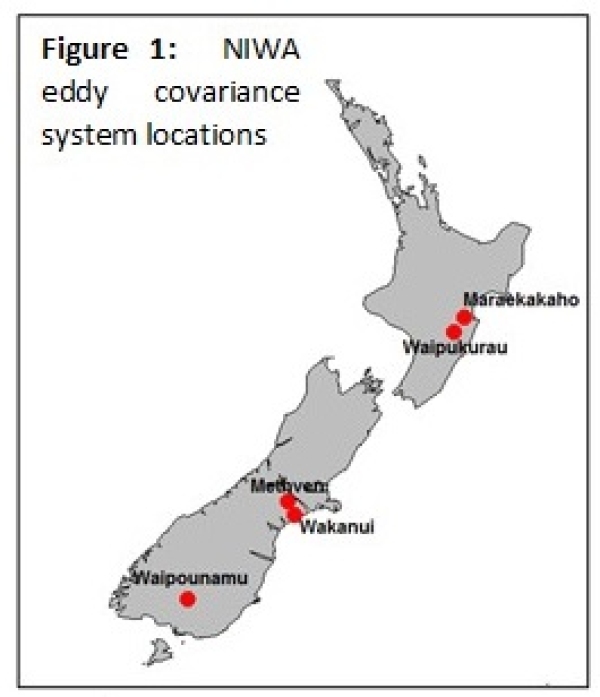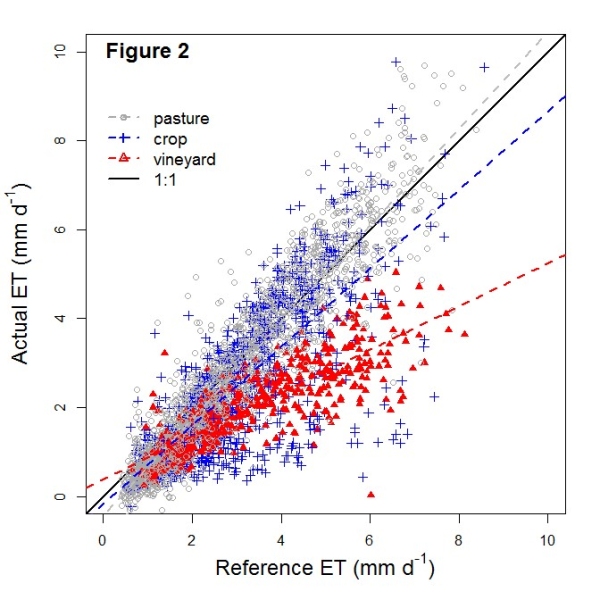Eddy covariance network allows NIWA to investigate the role of climate, vegetation and management practices on evaporative water loss from agricultural land-uses.
Evaporation and transpiration (collectively evapotranspiration, ET) are important components of terrestrial water balance, often accounting for 50% or more of precipitation (rainfall). Consequently, ET has economic importance for things like crop production and downstream water resources.
ET is typically estimated using standard equations of potential evapotranspiration, incorporating meteorological variables (light, temperature, humidity, wind speed), such as the FAO-56 reference ET (ET0) equation. However, actual ET can differ substantially from predicted ET0 depending on crop type and water availability for evaporation.
In an effort to determine the drivers of these variations of actual evapotranspiration from predictions, NIWA has deployed a network of eddy covariance systems across New Zealand (Figure 1).
These systems utilize continuous, high-frequency observation of turbulent exchanges of heat and water vapour to provide a direct measurement of water loss to evapotranspiration. NIWA’s network consists of five eddy covariance systems across a range of land-uses and climate: three irrigated dairy pastures in Canterbury, Southland and Hawke’s Bay, a seed/silage crop farm in Canterbury and a vineyard in Hawke’s Bay.
Results suggest that irrigated pasture ET is well approximated by ET0 (Figure 2). Silage crop ET is similar to ET0 during the growing phase, however, it can be as little as 30% of ET0 following harvest and cessation of irrigation. Vineyard ET is clearly impacted by deficit irrigation techniques, typically accounting for 60% of ET0.
Ongoing operation of the eddy covariance network will allow NIWA to investigate the role of climate, vegetation and management practices on evaporative water loss from agricultural land-uses. These measurements will lead to improved estimates of ET which will contribute to more efficient irrigation practices.


